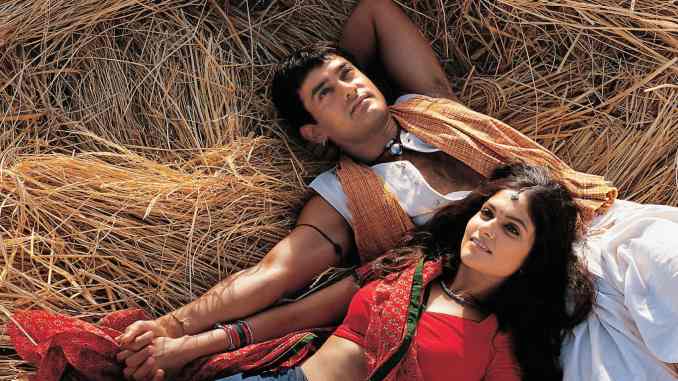20 Years Later, Lagaan Remains Bollywood’s Seminal Crossover Hit

Lagaan, which translates to “taxation,” isn’t based on a true story, but it may as well serve as the origin story for India’s most popular sport. In the film, which turns 20 today, colonial India is introduced to the game of cricket by way of English imperialism. An arrogant British captain (Paul Blackthorne) bets the season’s taxes on a game, literally banking on the villagers’ lack of knowledge. But Bhuvan (Aamir Khan), tired of the monarchy’s stranglehold on his home, takes it upon himself to not only learn cricket but master the game while their village’s fate hangs in the balance.
In revisiting the drama two decades later, it’s clear why it’s a title to return to over and over. As far as the formula goes, Lagaan stays true to its Bollywood DNA. There are a number of catchy song-and-dance sequences, though the songs play more as diegetic numbers that are additive to the storytelling instead of the fantasy sequences that the industry sometimes leans on. (It helps that the songs are bangers, helmed by the great A.R. Rahman). It’s an epic sports drama with pieces of romance and comedy all wrapped into an almost four-hour runtime. Despite the length, it’s hugely engrossing and well-plotted.
But it is also a uniquely Indian story. India only gained independence from Britain in 1947, and Lagaan isn’t afraid to show the realities of colonial British rule, where every brown face was treated like a slave to the white man. In one scene, a low caste man accidentally pricks the horse he is cleaning. Blackthorne abuses him both verbally and physically, treating him worse than the animal he was working on. In another, a higher status guard cheers for India during the cricket match and receives a slap in the face for rooting against Britain. Juxtaposed against one another, the film portrays the upper caste Indians as working in higher status jobs than the lower caste, but at the end of the day all Indians serve the British.
Lagaan also shows the realities of rural India, where the caste system reigns supreme. The film humanizes the Dalit, or “Untouchable,” caste who are often shown as and believed to be less than human. Through the character Kachra (Aditya Lakhia), the innately poor treatment of lower castes is shown realistically: At first he is shunned from joining the team due to his societal status, but then the idea is turned on its head without fanfare—Kachra can bowl the ball with a spin. Suddenly he is invaluable to the team; he is embraced as part of the team, despite what he was born into. It’s a subtle moment that feels as important to the story today as it did in 2001.
Of course, there’s the Oscar of it all. It’s hard to talk about Lagaan without mentioning that it’s the last Indian film to receive a nomination for Best Foreign Language (now, International) Film at the Academy Awards. Because of this, the film’s legacy looms larger than life all these years later. While there are many theories and explanations for this fact, it still begs the question of what, exactly, made Lagaan stand out as only the third film from the subcontinent to break through and receive a nomination?
-

-

-

-

-

-

-

-

-

-

-

-

-

-

-

-

-

-

-

-

-

-

-

-

-

-

-

-

-

-

-

-

-

-

-

-

-

-

-

-








































